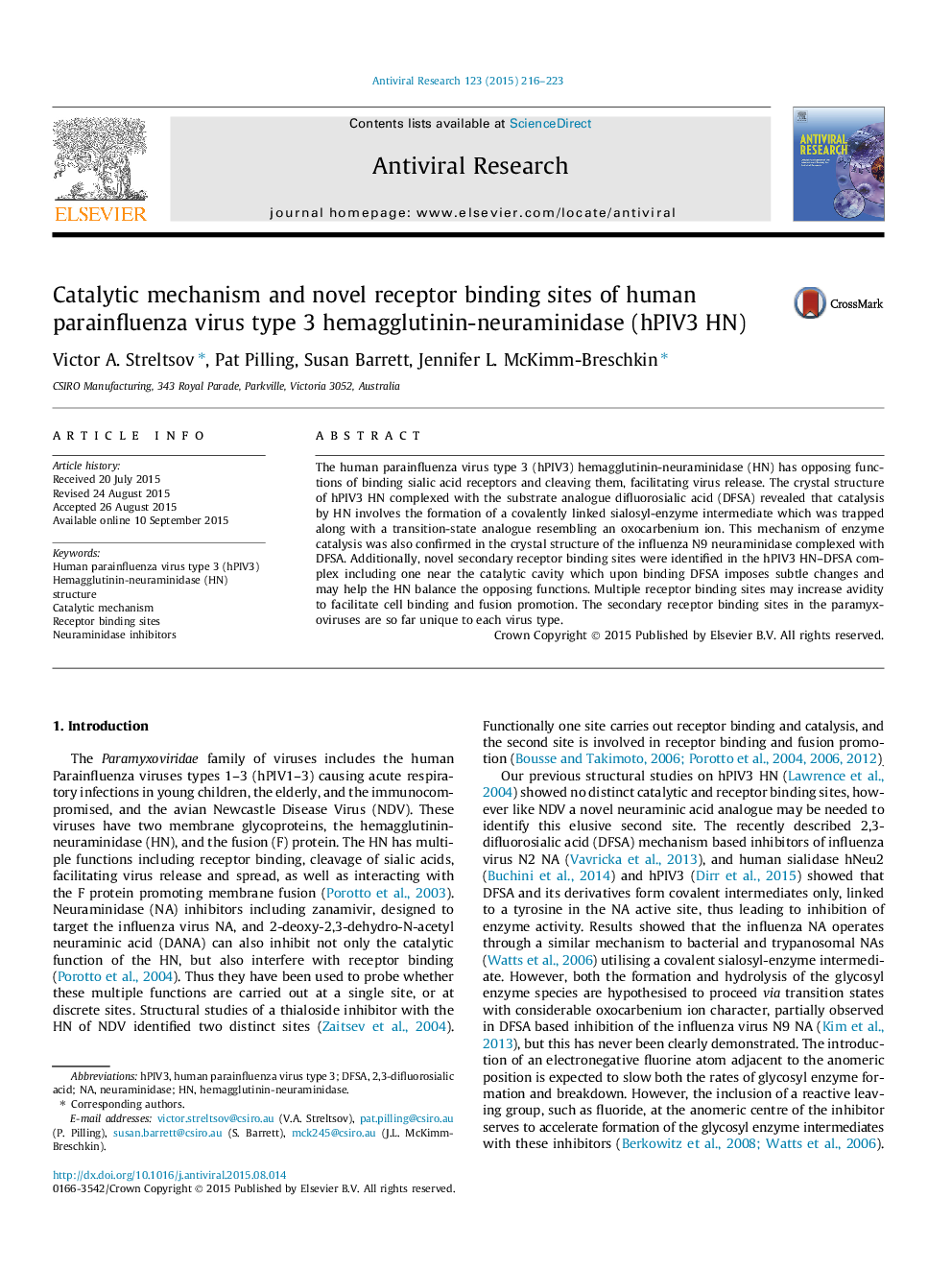| کد مقاله | کد نشریه | سال انتشار | مقاله انگلیسی | نسخه تمام متن |
|---|---|---|---|---|
| 2509782 | 1557820 | 2015 | 8 صفحه PDF | دانلود رایگان |

• Mechanism based DFSA inhibitors identified hPIV3 HN catalysis involves a covalently linked sialosyl-enzyme intermediate.
• A transition-state analogue resembling an oxocarbenium ion was also identified in the active site of hPIV3 HN.
• A similar analogue was identified in the influenza N9 NA, indicating common catalytic mechanisms of HN and influenza NA.
• Novel secondary receptor binding sites were identified for the first time in the hPIV3 HN.
• Sialic acid binding may induce subtle changes helping HN balance the opposing receptor binding and catalytic functions.
The human parainfluenza virus type 3 (hPIV3) hemagglutinin-neuraminidase (HN) has opposing functions of binding sialic acid receptors and cleaving them, facilitating virus release. The crystal structure of hPIV3 HN complexed with the substrate analogue difluorosialic acid (DFSA) revealed that catalysis by HN involves the formation of a covalently linked sialosyl-enzyme intermediate which was trapped along with a transition-state analogue resembling an oxocarbenium ion. This mechanism of enzyme catalysis was also confirmed in the crystal structure of the influenza N9 neuraminidase complexed with DFSA. Additionally, novel secondary receptor binding sites were identified in the hPIV3 HN–DFSA complex including one near the catalytic cavity which upon binding DFSA imposes subtle changes and may help the HN balance the opposing functions. Multiple receptor binding sites may increase avidity to facilitate cell binding and fusion promotion. The secondary receptor binding sites in the paramyxoviruses are so far unique to each virus type.
Journal: Antiviral Research - Volume 123, November 2015, Pages 216–223